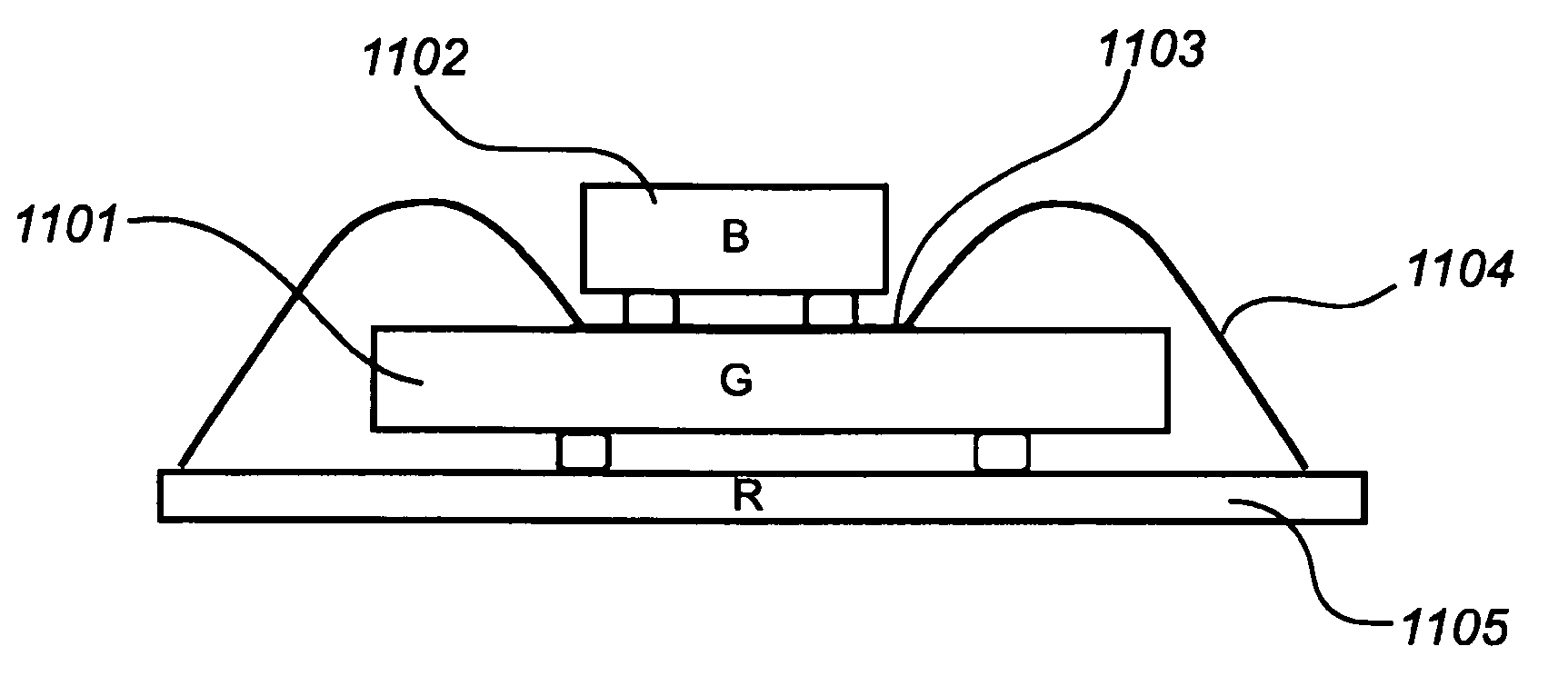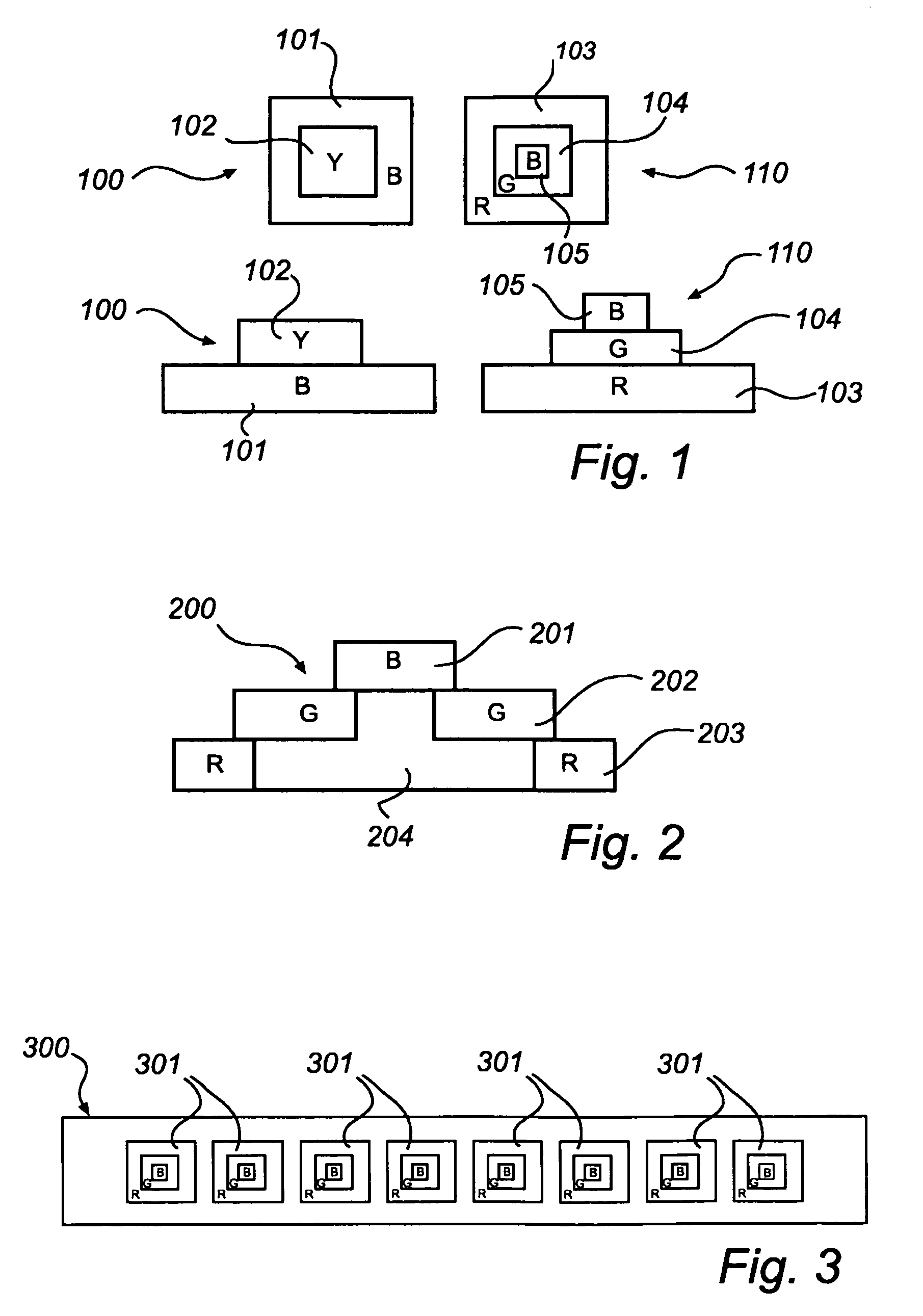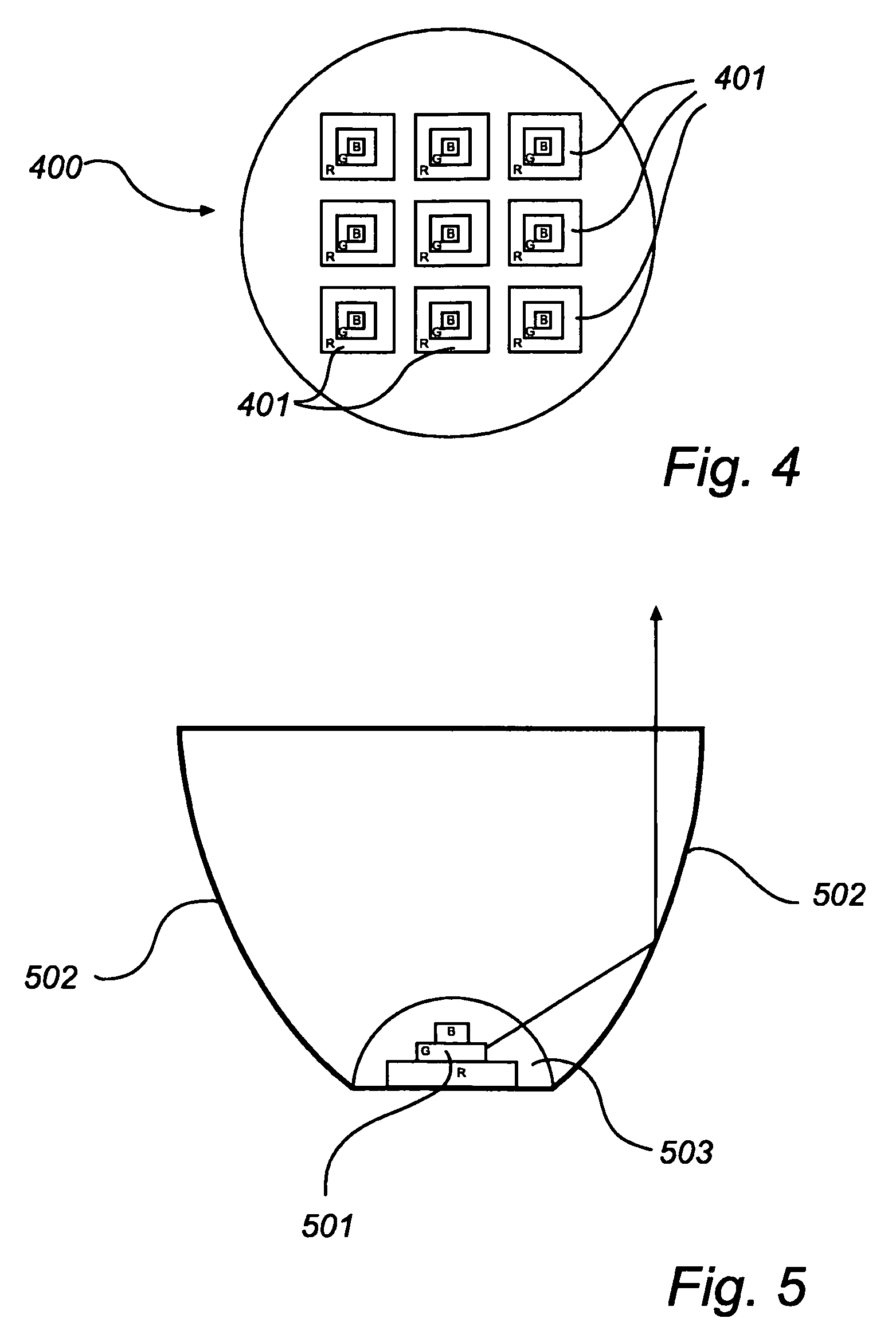Composite LED modules
a led module and composite technology, applied in the field of light-emitting diodes, can solve the problems of limited brightness, unsatisfactory use, and complicated white light generation, and achieve the effect of optimizing the use of available space and improving color mixing
- Summary
- Abstract
- Description
- Claims
- Application Information
AI Technical Summary
Benefits of technology
Problems solved by technology
Method used
Image
Examples
Embodiment Construction
FIG. 1 illustrates two alternative composite LEDs, 100 being a two color blue 101 and yellow 102 composite LED and 110 being a three color red 103, green 104, and blue 105 composite LED.
In an alternative embodiment, as illustrated in FIG. 2, a composite LED 200 is provided with a heat sink 204 on which the LED units 201, 202, 203 are arranged. The heat sink 204 serves to remove heat from the LED units during operation.
The composite LED is advantageous for use in many applications. For example, as illustrated in FIG. 3, an 8-by-1 array of composite LEDs can be arranged in line lamp 300. An alternative configuration in the form of a spot lamp 400 is illustrated in FIG. 4, carrying a 3-by-3 array of composite LEDs 401.
According to one embodiment, as illustrated in FIG. 5, a composite LED 501 can be arranged with a reflector 502. In such an arrangement, the composite LED may furthermore be encapsulated in an encapsulating material 503. The reflector can, for example, be formed out of al...
PUM
| Property | Measurement | Unit |
|---|---|---|
| first wavelength | aaaaa | aaaaa |
| second wavelength | aaaaa | aaaaa |
| wavelength | aaaaa | aaaaa |
Abstract
Description
Claims
Application Information
 Login to View More
Login to View More - R&D
- Intellectual Property
- Life Sciences
- Materials
- Tech Scout
- Unparalleled Data Quality
- Higher Quality Content
- 60% Fewer Hallucinations
Browse by: Latest US Patents, China's latest patents, Technical Efficacy Thesaurus, Application Domain, Technology Topic, Popular Technical Reports.
© 2025 PatSnap. All rights reserved.Legal|Privacy policy|Modern Slavery Act Transparency Statement|Sitemap|About US| Contact US: help@patsnap.com



